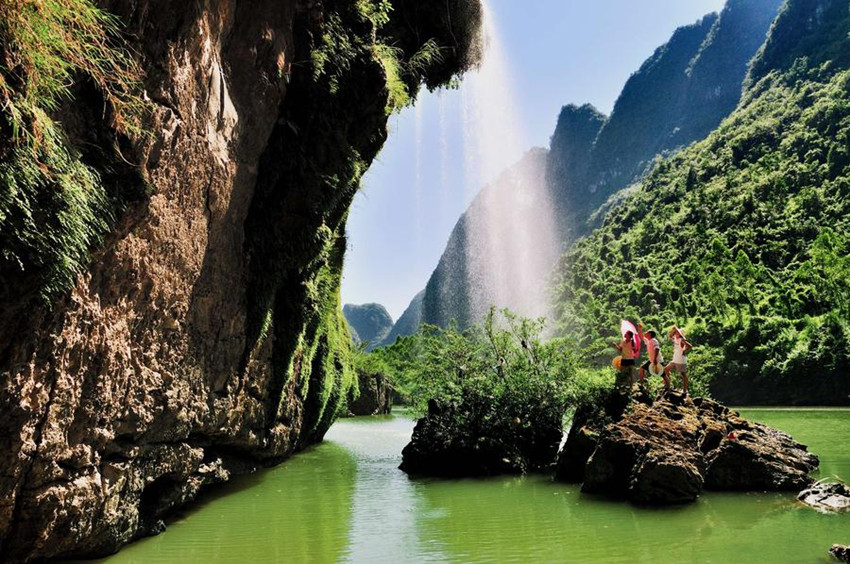 |
|
[Photo/Xinhua]
|
Yangshuo is a tourist town with amazing scenery. It's also bustling with bars, shops and especially traffic - both pedestrian and motor. As you wander the county on foot or bike, be prepared to take in both the views and fumes. Easy accessibility to Yangshuo has turned into a booming tourist destination. Yet this success invites pressure - the pressure of sustainable development.
A July 2005 report by the World Tourism Organization highlighted major concerns with the region; the water quality of its rivers, overcrowding from tourism, and fear that rapid changes may alter its green image. According to the report, Yangshuo is located in one of the fastest growing domestic and international tourism markets in the world. Between 1986 and 2004, the number of overnight visitors to the county went from 30,000 annually to 512,000, and 1.75 million passengers rode along the Lijiang River and docked at Yanhshuo in 2004. The region's beauty attracts both opportunities and threats.
It's a simple paradox: Increasing tourism generates increased profit that can be put back into Yangshuo's infrastructure, yet at the same time, increasing tourism weighs heavily on the very infrastructure that needs support.
Yangshuo is home to about 300,000 people, with half living in the town. The story of Yangshuo could become like that of the Italian city of Venice, where 60,000 people live but about 270,000 people call it their home. Mass tourism has driven residents out due to rising rent prices, high cost of living, and lack of jobs outside of tourism. It's been dubbed a "heritage theme park". In 2009, Venice residents that remained in the historical city held a "funeral" to symbolize the death of their city.
Yangshuo's challenge isn't as severe, but the town can learn from the effects that an imbalance of tourism can have upon a historical region. If sustainable development is ignored, the very scenery and atmosphere loved by residents and travelers alike may wither away.
We Recommend:
